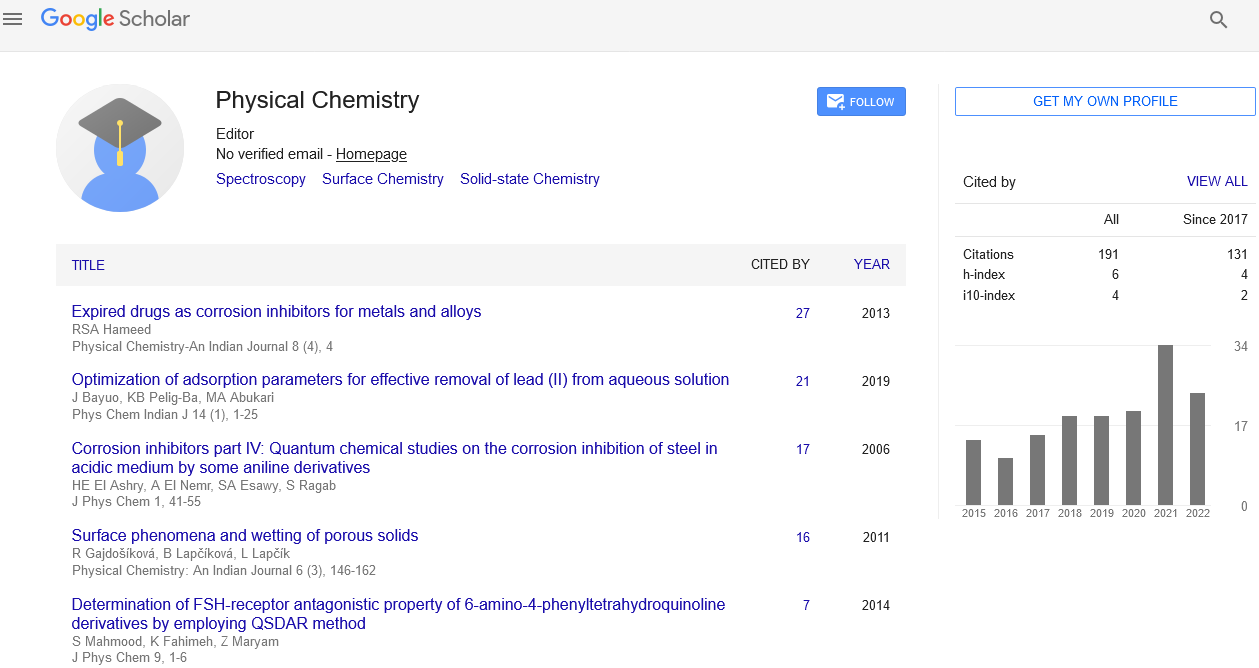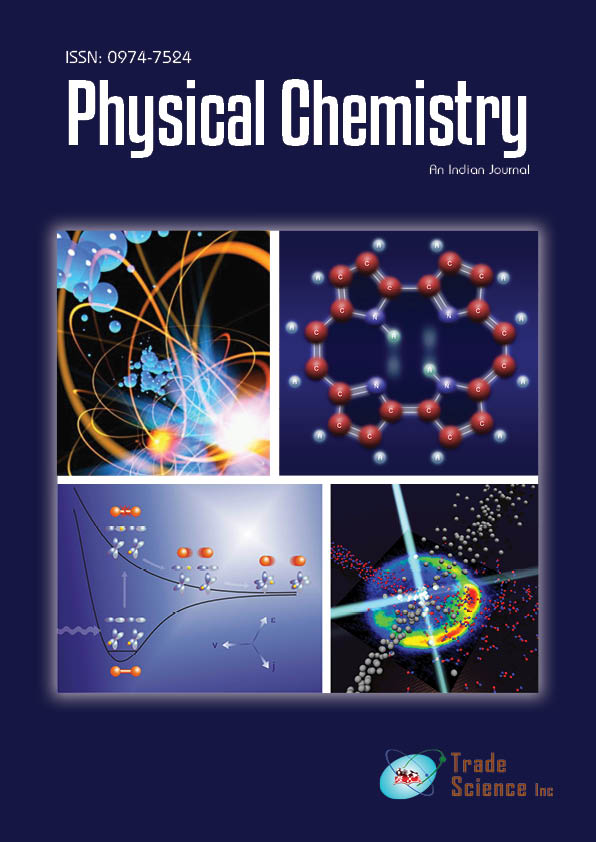Review
, Volume: 17( 1)Role of Photo Dynamic Therapy in Cancer Treatment
Chloe Wilson *
- *Correspondence:
- Chloe Wilson
Editorial Office,
Physcal Chemstry: An Indian Journal,
United Kingdom,
E-mail: physicalchem@journalres.com
Received: January 05, 2022; Accepted: January 19, 2022; Published: January 26, 2022
Citation: Wilson C. Role of Photo Dynamic Therapy in cancer Treatment. Int J Chem Sci 2022;17(1):163
Abstract
Photodynamic therapy (PDT) is a minimally invasive, clinically approved therapeutic treatment that has the ability to selectively kill cancer cells. The technique begins with the introduction of a photosensitizing agent, followed by irradiation at a wavelength that corresponds to the sensitizer's absorbance band. In the presence of oxygen, a number of events occur that result in direct tumor cell death, microvascular damage, and the initiation of a local inflammatory response. PDT has been shown to be curative in clinical trials, especially in early-stage cancers. It can help patients with inoperable malignancies live longer and have a better quality of life. This treatment has little normal tissue toxicity, minor systemic effects, significantly reduced long-term morbidity, no innate or acquired resistance mechanisms, and excellent cosmetic and organ function sparing effects. It is an important therapeutic alternative for patients receiving several treatments.
Introduction
Despite advances in basic research that have improved our understanding of tumor biology and led to the development of new generations of targeted therapies, recent major cancer clinical trials have been unable to find only minor changes in treatment results, with a few significant exceptions. Furthermore, the number of novel medications that have been clinically approved is regrettably low [1]. These grim data suggest that, in order to achieve future progress, other existing but unappreciated therapeutic approaches must be prioritized. Photodynamic treatment (PDT) offers the ability to address a wide range of medical needs that are now unmet. It is already a successful and clinically authorized therapy technique for the management of neoplastic and non-malignant disorders, despite its youth. The first drug-device combination to be authorized by the FDA was PDT [2].
PDT is made up of three main components: photosensitizer (for specialist term definitions), light, and oxygen. None of them are toxic on their own, but when they combine, they cause a photochemical process those results in the formation of singlet oxygen, a highly reactive molecule [3]. The latter can quickly induce considerable toxicity, resulting in apoptosis or necrosis, and cell death. PDT's antitumor effects are due to three interconnected mechanisms: direct cytotoxic effects on tumor cells, disruption to the tumor vasculature, and activation of a powerful inflammatory response that can lead to systemic immunity development. The relative contribution of these pathways is highly dependent on the PS type and dose employed the period between PS administration and light exposure, the overall light dose and flounced rate, and the tumor type [4].
Discussion
Photodynamic therapy consists of two main stages. Following the injection of a light-sensitive PS, tumor loci are treated with a wavelength-appropriate light. Using flexible fiber-optic devices, the latter may be given to practically every organ in the body. Both the ability of relevant photosensitizers to locate in neoplastic lesions and the exact delivery of light to the treated regions contribute to selectivity [5]. PDT's extremely localized nature, ironically, is one of its present limits, as the treatment is ineffective against metastatic lesions, which are the leading cause of cancer-related death. Current research is aimed at determining the best PDT conditions for inducing systemic immunity, which could, at least in part, eliminate this barrier in the future.
PDT can be used before or after chemotherapy, radiation, or surgery without jeopardizing the effectiveness of these treatments [6]. None of the PSs that have been licensed for clinical use accumulate in the nuclei of cells, limiting DNA damage that could be carcinogenic or contribute to the creation of resistant clones. Furthermore, there are no side effects from chemotherapy or radiation. PDT sensitivity is unaffected by radio- or chemo resistance. PDT is useful for patients with skin cancer because of its excellent cosmetic results. There are no major changes in tissue temperature, and the preservation of connective tissue leads to minimal fibrosis, allowing hollow organs undergoing PDT to retain their functional architecture and mechanical integrity. PDT can help patients with inoperable cancers who have exhausted all other therapy choices improve their quality of life. Finally, many PDT operations can be conducted in an out-patient or ambulatory setting, which reduces expenses while also improving patient comfort [7].
Singlet oxygen has an extremely limited lifespan (10-320 ns), limiting its diffusion in cells to only about 10-55 nm. As a result, photodynamic damage will occur near to the PS's intracellular position. Photoprint is a complex mixture of porphyrin ethers with a wide range of localization patterns that are usually found in lipid membranes [8]. The chlorine NPe6 targets lysosomes, the benzoporphyrin derivative (BPD) targets mitochondria, m-tetrahydroxyphenylchlorin (mTHPC) has been reported to target mitochondria, ER, or both, and the phthalocyanine Pc has a broad spectrum of affinity, with mitochondria being a prominent target. Other agents that have been produced have the capability of targeting several targets. Varied cell types may have different patterns of localization. The first report of photodynamic disruption of tissue microcirculation was published in 1963. Using a window chamber, researchers observed the microcirculation of an implanted breast tumor and neighboring normal tissue in rats before, during, and after PDT sensitized with HPD [9]. Initial blanching and vasoconstriction of tumor arteries were followed by a variety of reactions, including complete blood flow stasis, bleeding, and platelet aggregate formation in some larger vessels. Extracted tissues from mice showed a wide range of vascular responses, including disruption of blood flow to subcutaneous urothelial tumors and normal rat jejunum, breakdown of the blood brain barrier in normal mice brains, and endothelial cell and organelle damage in subcutaneous tumors and normal tissue [10]. Other research found that tumor cells treated in vivo with a possibly therapeutic photodynamic dosage were congenic if removed from the host right away. When tumors were left in the host for longer periods of time, they lost clonogenicity, which matched to the progression of PDT-induced hypoxia as measured radio biologically. At sub-curative PDT dosages, hypoxia was found to be adequate to prevent direct tumor cell death. In animal models, these investigations revealed that vascular injury plays a key role in regulating the tumor response to PDT [11].
PDT frequently causes a severe acute inflammatory reaction at the targeted region, which manifests as localized edema. The oxidative stress caused by PDT causes this reaction. PDT can thus be classified as a cancer therapy (together with cryotherapy, heat, and focused ultrasonic ablation) that causes a chemical/physical insult in tumor tissue, which the host perceives as localized acute trauma [12]. This causes the host to take preventive measures that have evolved in response to threats to tissue integrity and homeostasis at the damaged spot. In this case, the primary protective effector process is the acute inflammatory response. Its major goal is to keep homeostasis in check, ensure that damaged cells are removed, and then promote local healing and normal tissue function [13].
PDT's usage in the treatment of cancer patients has been delayed to acquire on in modern medicines. Even when used in therapeutic settings, PDT for cancer is commonly utilized as an alternate or palliative treatment or as part of a clinical trial [14]. The plethora of accompanying technology like as lasers, applicators/fiber optics, and power meters, as well as the requirement to complete manual radiation dose calculations, can be intimidating to the PDT newbie. This challenge can be addressed more readily with the help of a radiation oncologist or medical physicist who has some training in optical techniques and radiation protection. Another potential issue is the lack of phase III clinical trials that could show that PDT is better to other methods [15]. While more randomized studies of PDT are needed, doctors have been considerably more willing to employ alternative technologies and medicines that have a similar lack of phase III data. Finally, the firstgeneration PSs had long-term skin sensitivity to visible light, which likely limited their utility in palliative care, particularly for patients with a life expectancy of less than 6-12 months. However, improved dosimetry, LED and diode-based laser technologies with simplified user interfaces, and new PSs with reduced skin photosensitivity duration, combined with mechanistic studies that may allow patient or tumor specific therapy selection, suggest that PDT has the potential to make the transition to widespread clinical use in the oncologic field [16].
Conclusion
PDT is still recognized as a novel and promising anti-cancer approach. Its entire potential has yet to be demonstrated, and the scope of its applications, whether alone or in combination with other approved or experimental medicinal techniques, is far from exhausted. When compared to surgery, chemotherapy, or radiotherapy, PDT has a lower long-term morbidity rate and does not limit future treatment options for remaining or recurring disease. Mutations that provide resistance to radiotherapy or chemotherapy do not limit antitumor efficacy due to a lack of natural systems of O2 removal and a unique mechanism of cytotoxicity. PDT can be used again and again without losing its effectiveness. Chemotherapeutics and radiation are both limited by these variables. Finally, several traditional anticancer therapies have the potential to cause immunosuppression. PDT-induced immunogenic cell death in combination with the generation of a robust local inflammatory response has the potential to develop into a therapeutic method with excellent local anticancer activity and the ability to augment the immune response for efficient metastasis elimination. PDT's interdisciplinary nature excites experts in physics, chemistry, biology, and medicine, and its continued development and creative applications are only limited by their vast imagination.

